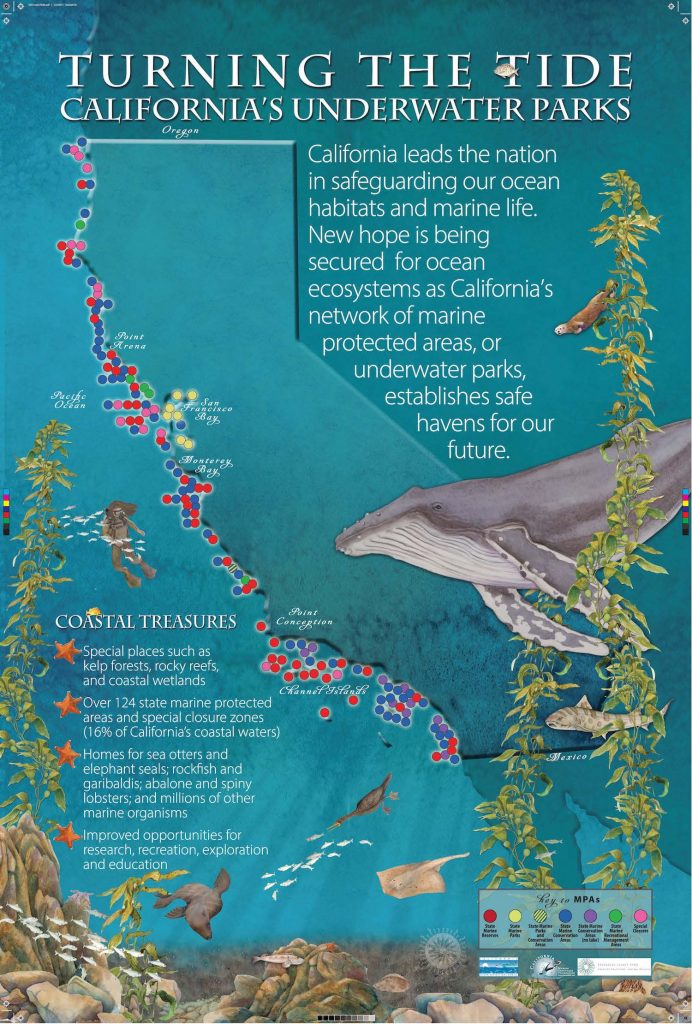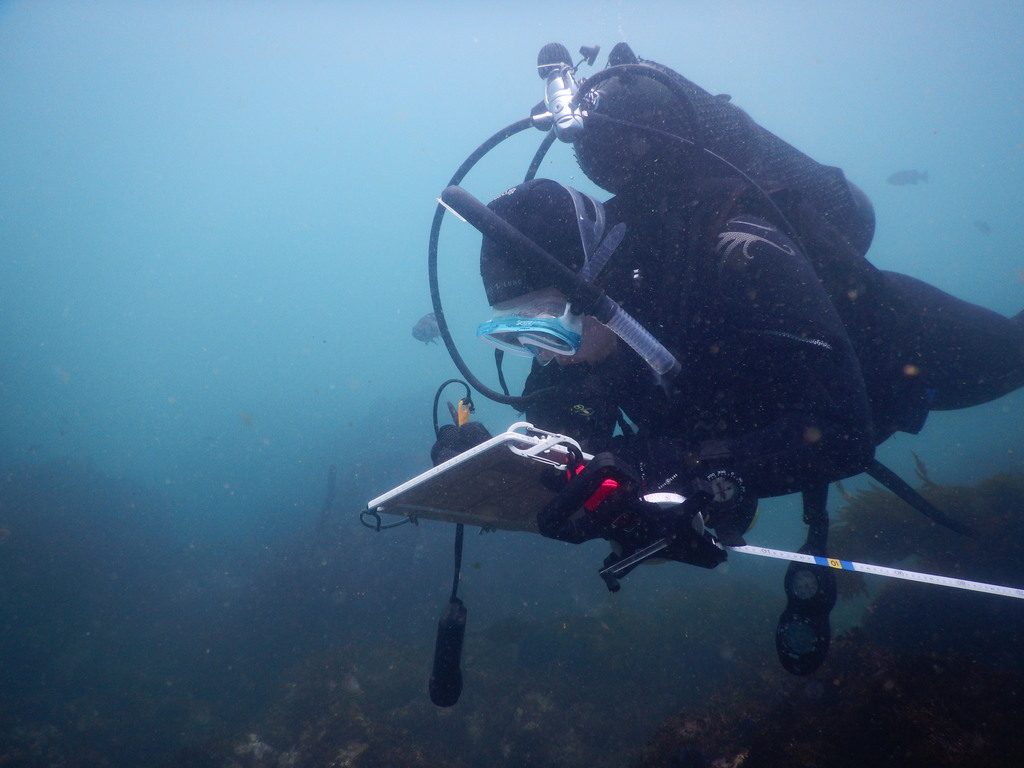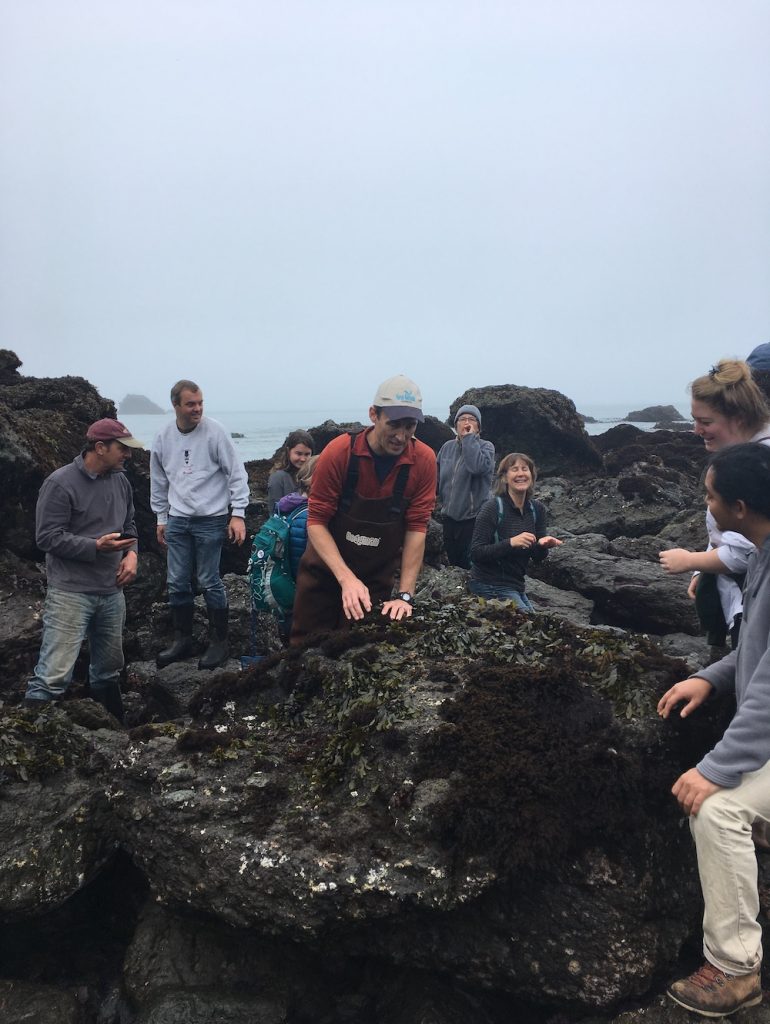
Back in 2012, California became the first state in the nation to establish a network of marine protected areas (MPAs) to protect and restore ocean habitats, and increase the health, productivity and resilience of ocean ecosystems. Now, just seven years after its completion a new study published in the peer-reviewed journal, Ocean and Coastal Management, finds California’s network of MPAs is already showing signs of success!

“This really is the second half of California’s MPA success story,” said Samantha Murray, executive director, Master of Advanced Studies Marine Biodiversity & Conservation of Scripps Institution of Oceanography, who co-authored the study along with Tyler Hee of environmental law firm DeLano and DeLano. The establishment of California’s network of MPAs was a huge undertaking that began with the passage of the Marine Life Protection Act in 1999. Implementation of the network took place between 2004 and 2012, during which California’s 1,100-mile coastline was divided into five regions. In each region, local stakeholders, scientists and policy experts worked together to decide how best to create that area’s MPAs, ultimately creating 124 underwater refuges along California’s coast from the Oregon border to Mexico.

Following implementation, a baseline monitoring effort was conducted across the state to establish a benchmark and provide a foundation for long-term marine management which is now ongoing. Management is designed to be comprehensive and strategic, with a focus on scientific monitoring, interagency coordination, public education and outreach, and enforcement.

“California has continued to invest in its MPAs with a robust and comprehensive management program that will allow marine wildlife and habitats to enjoy the full benefits of protection," Murray said regarding the study. “Early results already show bigger and more fish inside MPA boundaries, especially in older MPAs like those at the Northern Channel Islands, Point Lobos and Point Cabrillo. And in some cases, we are even seeing spillover effects.”
More research efforts are slated to continue as the California Ocean Protection Council recently approved $9.5 million to fund seven projects through the MPA Monitoring Program. Among the projects are five lead by faculty at Humboldt State University. Projects include “Socioeconomic monitoring program for consumptive human uses,” by Laurie Richmond, environmental science & management professor, and “Monitoring and evaluation of mid-depth rocky reef ecosystems,” by Brian Tissot, director of the HSU Marine Lab and biology professor. A full description of these projects can be found here.
The article also notes that state agencies are now seeking to add California’s MPA Network to the International Union for Conservation of Nature (IUCN) Green List, to provide further recognition and protection. The Green List serves as a global standard highlighting well-managed protected areas contributing to “sustainable development through the conservation of nature and provision of associated social, economic, cultural and spiritual values.” Surfrider Foundation’s California Policy Manager Jennifer Savage is part of an expert assessment group to evaluate California's marine protected area network for inclusion on the list.
For local, national, and global efforts, California's MPA Network and post-designation management efforts provide a valuable and educational case study for MPA managers. "It’s my hope that California’s leadership might serve as a model for other MPA management programs, especially as we strive to hit global MPA targets," said Murray.
Surfrider Foundation supports MPAs in California and elsewhere to protect and restore ocean resources. To learn more, see our MPA position statement here.
